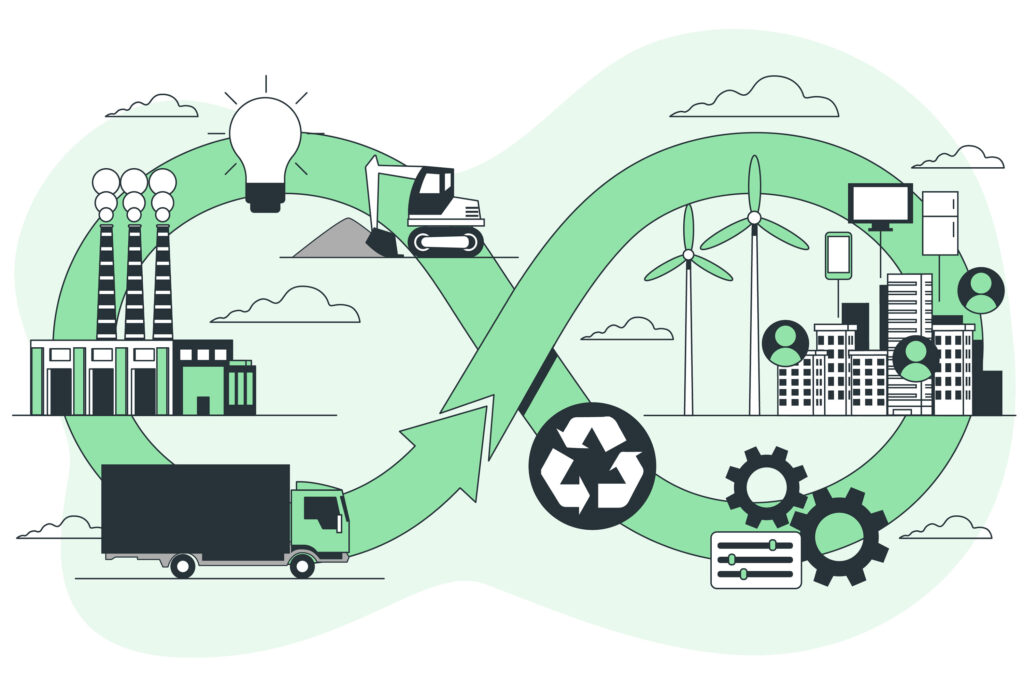
ESG stands for Environmental, Social, and Governance. The term is used to measure companies’ engagement in initiatives that reduce negative environmental impacts, make companies economically sustainable, and promote a fairer society.
It is also an indicator of sustainable investment which, in 2022 alone, mobilized over $30.3 trillion. According to the Global Sustainable Investment Alliance (GSIA), investors cited climate change and carbon emissions as the main ESG criteria in asset selection. Other highlighted reasons included corporate governance issues and sustainable natural resources.
The movement originated in 2004 in a publication by the UN Global Compact with the World Bank, called “Who Cares Wins.” Prompted by the then-UN Secretary-General, its purpose was to engage 50 CEOs of large companies in the Global Compact’s Ten Principles and the agenda of the 17 Sustainable Development Goals (SDGs).
Regardless of the sector, sustainability is everyone’s agenda. By mobilizing and creating actions for sustainability, companies can reduce their negative impacts, promote efficiency and innovation, ensure the resilience of their operations, and strengthen their reputation and value in the market.
In this sense, the supply chain plays a fundamental role in achieving ESG. By adopting a sustainable approach, the procurement area promotes not only operational efficiency but also environmental and social responsibility throughout the supply chain.
ESG Pillars in the Procurement Context
Integrating ESG criteria at all stages of the procurement process includes selecting suppliers that share the same values and commitments to sustainability, implementing risk management and compliance practices, and establishing collaborative partnerships to promote innovation and continuous improvement towards ESG practices.
Here are the main impacts to consider in the sector’s strategy, considering environmental, social, and governance aspects.
E (Environmental) – Environmental Issues
In procurement, the “E” in the ESG context refers to environmental issues, a fundamental part of corporate social responsibility and sustainability criteria applied to the company’s procurement processes.
| Environmental impact of products | Assessment of the products’ life cycle, from raw material extraction to disposal. |
| Energy efficiency | Prioritization of products and suppliers that prioritize renewable energy sources and more efficient manufacturing processes. |
| Carbon emission reduction | Selection of suppliers with carbon emission reduction initiatives, such as the use of more sustainable transportation. |
| Natural resource conservation | Decrease in water consumption, biodiversity protection, and ecosystem preservation. |
| Waste management | Adoption of production and packaging practices that reduce waste, prioritizing recycling and reuse. |
| Environmental compliance | Company and suppliers compliant with all environmental regulations and applicable standards. |
S (Social) – Social Issues
Here, concerns are related to society as a whole, from basic issues such as customer satisfaction to socially relevant matters such as diversity, privacy and data security, human rights, and labor laws.
| Working conditions | Evaluation of employees’ working conditions throughout the supply chain, including labor rights. |
| Human rights | Ensuring that suppliers respect human rights, avoiding discrimination and child labor practices. |
| Diversity and inclusion | Promotion of diversity and inclusion throughout the supply chain, encouraging equal opportunities for all. |
| Community development | Support for initiatives that benefit the local communities where suppliers’ operations are located. |
| Health and safety | Implementation of policies and practices that protect workers’ health and safety, as well as communities. |
| Business ethics | Adoption of ethical standards and transparency in business operations, avoiding bribery, corruption, and unethical business practices. |
G (Governance) – Corporate Governance Issues
By considering governance issues in procurement activities, companies strengthen their reputation, reduce compliance-related risks, and increase the trust of investors, customers, and other stakeholders.
| Governance structure | Assessment of the company’s and its suppliers’ governance structure, with supervision and control mechanisms. . |
| Corporate ethics | Promotion of ethical practices throughout the supply chain, such as policies against corruption and conflicts of interest. |
| Transparency and disclosure | Clear information about operations, financial performance, governance practices, and environmental and social impacts. |
| Risk management | Processes to identify, assess, and mitigate operational, financial, environmental, social, and compliance risks. |
| Regulatory compliance | Compliance with all applicable laws, regulations, and standards related to the company’s operations and procurement practices. |
| Audits | Audits play a key role in ensuring compliance, integrity, reliability, and effectiveness of processes. |
How Technology Can Help Companies in ESG Criteria?
Technology plays a key role in supporting companies in implementing and advancing ESG (Environmental, Social, and Governance) criteria. Through digital solutions, companies can improve their transparency, efficiency, and accountability regarding ESG issues.
In the environmental area, technology enables effective monitoring and management of natural resource consumption, carbon emission reduction, and waste management. IoT sensors, big data analysis, and artificial intelligence can be employed to optimize logistics processes, identify energy consumption patterns, and promote the circular economy.
Digital platforms, such as the e-Procurement from Mercadoe, can be used to verify fiscal, financial, operational, and environmental aspects of suppliers. Additionally, technology allows transactions between companies to be more transparent. Supplier performance can be periodically assessed through questionnaires, allowing monitoring and alignment with the company’s objectives and guidelines.
Regarding governance, integrated management systems and blockchain are examples of technologies that can strengthen transparency and traceability in all company operations. These solutions help ensure compliance with regulations, promote corporate ethics, and increase the confidence of investors and consumers.
Procurement Practices Promoting ESG
Below are the main practices that the supply chain can adopt to make the company environmentally and socially responsible, as well as more valuable in the market:
- Adoption of cloud solutions
By adopting a cloud solution, such as those offered by Mercado Eletrônico, procurement teams have control over operations with suppliers, promoting more transparent, fair, and compliant commercial relationships.
- Efficient and sustainable transportation and logistics
The transportation sector is the most polluting, followed by the industry. For this reason, pay attention to your supplier choices, such as vehicles powered by clean energy, route optimization, and reducing travel time.
- Supplier management
Choosing good business partners, i.e., suppliers with socially and environmentally responsible processes throughout the production chain, is essential for building a more sustainable supply chain.
- Digital platforms
The use of digital solutions, such as Mercado Eletrônico’s e-Procurement, to manage purchases and suppliers is essential for ESG engagement, as they allow transparency and traceability regarding environmental, social, and governance aspects.
Find out how Mercadoe can help your company achieve sustainable Procurement. Request contact from one of our solution specialists by clicking here.
See you next time! 😉


 Português do Brasil
Português do Brasil Español
Español Português
Português
